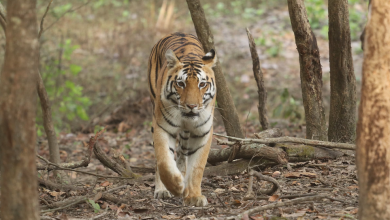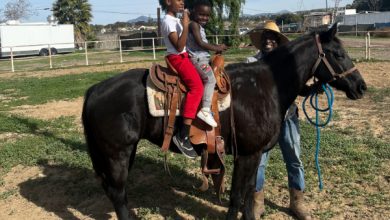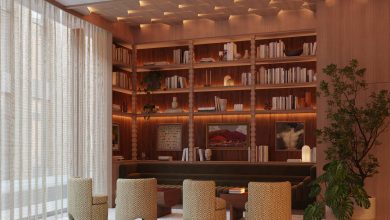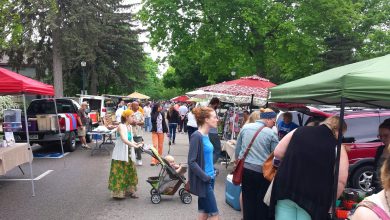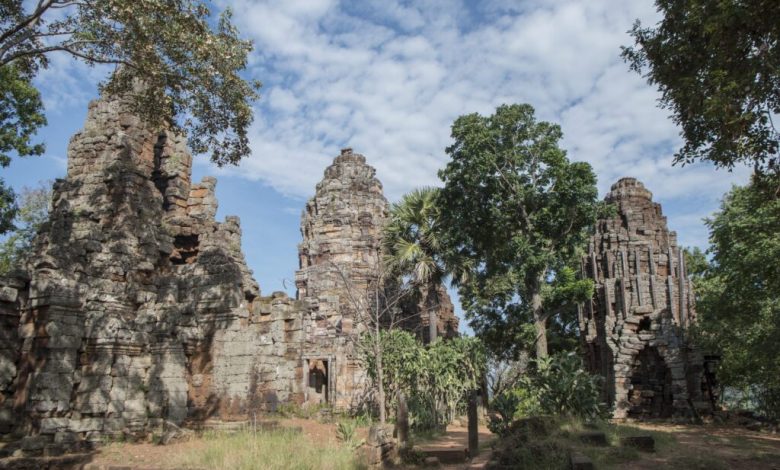
While Phnom Penh and Siem Reap often top travellers’ lists in Cambodia, Battambang offers a quieter, more grounded look at the country.

Even here, where things move a little slower, it’s easy to follow the same well-worn paths to places like Ek Phnom Temple, the bamboo train, or memorial sites such as Wat Samraong Knong. But step just a little further out, and you’ll find places that combine local history, everyday culture, and peaceful landscapes – without the crowds.
Here are three detours from the usual Battambang itinerary that are well worth your time.

350 steps to heaven: Wat Banan Temple
About 25 km south of Battambang, Wat Banan sits at the top of a hill, reached by climbing more than 350 steps. The temple dates back to the 11th century, and while time and weather have worn down its towers, much of its original structure still stands.
At the top, five towers rise on a laterite platform, giving visitors views across the plains and a chance to explore carvings, scattered lintels, and fragments of ancient sculpture. Look closely and you’ll see subtle details – devata carvings on the sandstone, or the torso of a Dvarapala lying nearby.
At the base, there’s a working pagoda, a shaded lake surrounded by bamboo huts for eating and resting, and even a small cave to explore. If you’re visiting later in the day, you can combine the trip with nearby attractions like the Banan Bamboo Train.

The Lake That Locals Love: Kamping Puoy Lake
Situated between two hills about 30 km west of Battambang city, Kamping Puoy Lake is a favorite among locals and increasingly popular with visitors looking for a peaceful retreat. Originally constructed as part of an irrigation project during the Khmer Rouge era, the lake is now a vital water source and a scenic destination.
Kamping Puoy is ideal for a quiet picnic, paddleboat ride, or just relaxing in a lakeside bamboo hut with grilled fish and fresh coconut. On weekends, it becomes a lively gathering spot, with food vendors and families enjoying the breeze and water.
In the rainy season, the lake is full and vibrant, with lotus flowers dotting the surface. In the dry season, the water recedes, revealing green fields and grazing livestock — both equally picturesque in their own ways.

Homes That Breathe History: Wa Kor Cultural Village
Roughly 10–15 km southeast of Battambang, Wa Kor (also spelled Wat Kor) is known for its traditional wooden houses. Built between the 1920s and 1950s, many of these homes are still lived in by descendants of the original builders.
A few are open to visitors, including the Bun Roerng and Khor Sang houses, where the owners will give short, informal tours and share family stories, often in English or French. The houses are elegant in their simplicity: high wooden stilts, gleaming timber floors worn smooth by decades of use, and old family portraits on the walls.

Life in the village moves slowly, and it’s easy to spend time here just observing – whether it’s a family preparing food, children playing in the yard, or farmers returning from the fields. For an added experience, some tours include a ride around the village in an ox cart.
If you’ve come to Battambang looking for something less packaged, these places are a good place to start. They’re easy to reach but far enough from the usual stops to feel like discoveries. No crowds, no rush; just a slower kind of travel that sticks with you.
